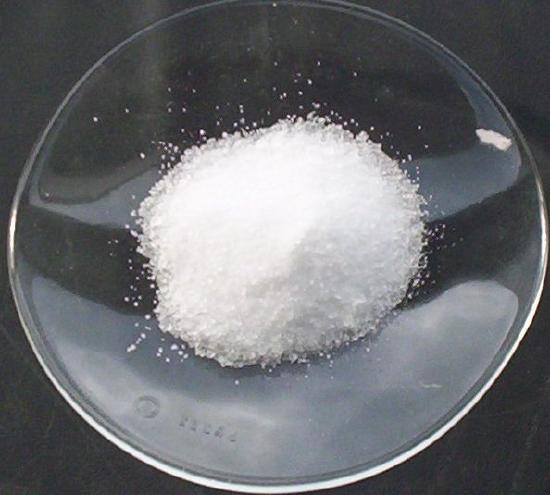Domestic Energy Storage in PCMs
- Page ID
- 50861
\( \newcommand{\vecs}[1]{\overset { \scriptstyle \rightharpoonup} {\mathbf{#1}} } \)
\( \newcommand{\vecd}[1]{\overset{-\!-\!\rightharpoonup}{\vphantom{a}\smash {#1}}} \)
\( \newcommand{\id}{\mathrm{id}}\) \( \newcommand{\Span}{\mathrm{span}}\)
( \newcommand{\kernel}{\mathrm{null}\,}\) \( \newcommand{\range}{\mathrm{range}\,}\)
\( \newcommand{\RealPart}{\mathrm{Re}}\) \( \newcommand{\ImaginaryPart}{\mathrm{Im}}\)
\( \newcommand{\Argument}{\mathrm{Arg}}\) \( \newcommand{\norm}[1]{\| #1 \|}\)
\( \newcommand{\inner}[2]{\langle #1, #2 \rangle}\)
\( \newcommand{\Span}{\mathrm{span}}\)
\( \newcommand{\id}{\mathrm{id}}\)
\( \newcommand{\Span}{\mathrm{span}}\)
\( \newcommand{\kernel}{\mathrm{null}\,}\)
\( \newcommand{\range}{\mathrm{range}\,}\)
\( \newcommand{\RealPart}{\mathrm{Re}}\)
\( \newcommand{\ImaginaryPart}{\mathrm{Im}}\)
\( \newcommand{\Argument}{\mathrm{Arg}}\)
\( \newcommand{\norm}[1]{\| #1 \|}\)
\( \newcommand{\inner}[2]{\langle #1, #2 \rangle}\)
\( \newcommand{\Span}{\mathrm{span}}\) \( \newcommand{\AA}{\unicode[.8,0]{x212B}}\)
\( \newcommand{\vectorA}[1]{\vec{#1}} % arrow\)
\( \newcommand{\vectorAt}[1]{\vec{\text{#1}}} % arrow\)
\( \newcommand{\vectorB}[1]{\overset { \scriptstyle \rightharpoonup} {\mathbf{#1}} } \)
\( \newcommand{\vectorC}[1]{\textbf{#1}} \)
\( \newcommand{\vectorD}[1]{\overrightarrow{#1}} \)
\( \newcommand{\vectorDt}[1]{\overrightarrow{\text{#1}}} \)
\( \newcommand{\vectE}[1]{\overset{-\!-\!\rightharpoonup}{\vphantom{a}\smash{\mathbf {#1}}}} \)
\( \newcommand{\vecs}[1]{\overset { \scriptstyle \rightharpoonup} {\mathbf{#1}} } \)
\( \newcommand{\vecd}[1]{\overset{-\!-\!\rightharpoonup}{\vphantom{a}\smash {#1}}} \)
\(\newcommand{\avec}{\mathbf a}\) \(\newcommand{\bvec}{\mathbf b}\) \(\newcommand{\cvec}{\mathbf c}\) \(\newcommand{\dvec}{\mathbf d}\) \(\newcommand{\dtil}{\widetilde{\mathbf d}}\) \(\newcommand{\evec}{\mathbf e}\) \(\newcommand{\fvec}{\mathbf f}\) \(\newcommand{\nvec}{\mathbf n}\) \(\newcommand{\pvec}{\mathbf p}\) \(\newcommand{\qvec}{\mathbf q}\) \(\newcommand{\svec}{\mathbf s}\) \(\newcommand{\tvec}{\mathbf t}\) \(\newcommand{\uvec}{\mathbf u}\) \(\newcommand{\vvec}{\mathbf v}\) \(\newcommand{\wvec}{\mathbf w}\) \(\newcommand{\xvec}{\mathbf x}\) \(\newcommand{\yvec}{\mathbf y}\) \(\newcommand{\zvec}{\mathbf z}\) \(\newcommand{\rvec}{\mathbf r}\) \(\newcommand{\mvec}{\mathbf m}\) \(\newcommand{\zerovec}{\mathbf 0}\) \(\newcommand{\onevec}{\mathbf 1}\) \(\newcommand{\real}{\mathbb R}\) \(\newcommand{\twovec}[2]{\left[\begin{array}{r}#1 \\ #2 \end{array}\right]}\) \(\newcommand{\ctwovec}[2]{\left[\begin{array}{c}#1 \\ #2 \end{array}\right]}\) \(\newcommand{\threevec}[3]{\left[\begin{array}{r}#1 \\ #2 \\ #3 \end{array}\right]}\) \(\newcommand{\cthreevec}[3]{\left[\begin{array}{c}#1 \\ #2 \\ #3 \end{array}\right]}\) \(\newcommand{\fourvec}[4]{\left[\begin{array}{r}#1 \\ #2 \\ #3 \\ #4 \end{array}\right]}\) \(\newcommand{\cfourvec}[4]{\left[\begin{array}{c}#1 \\ #2 \\ #3 \\ #4 \end{array}\right]}\) \(\newcommand{\fivevec}[5]{\left[\begin{array}{r}#1 \\ #2 \\ #3 \\ #4 \\ #5 \\ \end{array}\right]}\) \(\newcommand{\cfivevec}[5]{\left[\begin{array}{c}#1 \\ #2 \\ #3 \\ #4 \\ #5 \\ \end{array}\right]}\) \(\newcommand{\mattwo}[4]{\left[\begin{array}{rr}#1 \amp #2 \\ #3 \amp #4 \\ \end{array}\right]}\) \(\newcommand{\laspan}[1]{\text{Span}\{#1\}}\) \(\newcommand{\bcal}{\cal B}\) \(\newcommand{\ccal}{\cal C}\) \(\newcommand{\scal}{\cal S}\) \(\newcommand{\wcal}{\cal W}\) \(\newcommand{\ecal}{\cal E}\) \(\newcommand{\coords}[2]{\left\{#1\right\}_{#2}}\) \(\newcommand{\gray}[1]{\color{gray}{#1}}\) \(\newcommand{\lgray}[1]{\color{lightgray}{#1}}\) \(\newcommand{\rank}{\operatorname{rank}}\) \(\newcommand{\row}{\text{Row}}\) \(\newcommand{\col}{\text{Col}}\) \(\renewcommand{\row}{\text{Row}}\) \(\newcommand{\nul}{\text{Nul}}\) \(\newcommand{\var}{\text{Var}}\) \(\newcommand{\corr}{\text{corr}}\) \(\newcommand{\len}[1]{\left|#1\right|}\) \(\newcommand{\bbar}{\overline{\bvec}}\) \(\newcommand{\bhat}{\widehat{\bvec}}\) \(\newcommand{\bperp}{\bvec^\perp}\) \(\newcommand{\xhat}{\widehat{\xvec}}\) \(\newcommand{\vhat}{\widehat{\vvec}}\) \(\newcommand{\uhat}{\widehat{\uvec}}\) \(\newcommand{\what}{\widehat{\wvec}}\) \(\newcommand{\Sighat}{\widehat{\Sigma}}\) \(\newcommand{\lt}{<}\) \(\newcommand{\gt}{>}\) \(\newcommand{\amp}{&}\) \(\definecolor{fillinmathshade}{gray}{0.9}\)Big savings, both economic and environmental, can result from storing energy when it's inexpensive or abundant and using the stored energy when it's expensive or scarce. Power companies discount prices during "off peak demand" periods because it's cheaper for them to produce. Energy in peak demand periods is often produced by equipment (like turbines) that have higher fuel consumption than the equipment used for baseline power production.

There are materials that store energy when it's cheap and produced efficiently, so that it can be used in peak demand periods.
One kilogram of liquid "Glauber's salt" at its melting point (32 oC) can release enough heat to change the temperature of 1 kg of water from 25 oC to about 85 oC, and the temperature of the Glauber's salt does not change at all! How can this be?

Glauber's salt is sodiumsulphate decahydrate (Na2SO4 •10 H2O), and its melting point is 32 oC. If heat is added to 1 kg of solid Glauber's salt at room temperature (about 25 oC), the temperature gradually increases to the melting point, 32oC. But as the solid is gradually converted to liquid at the melting point, the temperature remains constant (at 32 oC) until 251 kJ of heat has been added. After all the solid has melted, the temperature again begins to rise as more heat is added. Similarly, 1 kg of liquid Glauber's salt at 32 oC will yield 251 kJ of heat as it turns to solid at 32 oC.
This macroscopic behavior demonstrates quite clearly that energy must be supplied to a solid in order to melt it. On a microscopic level melting involves separating molecules which attract each other.
Latent Heat of Fusion
The heat that is added to melt a solid at the melting point is called the Latent Heat of Fusion or enthalpy of fusion (The word fusion means the same thing as “melting.”) It's called the "latent" heatbecause it is "hidden", and not evident because there is no temperature change. The heat of fusion and is often quoted on a molar basis. When 1 mol of ice, for example, is melted, we find from experiment that 6.01 kJ are needed. The molar enthalpy of fusion of ice is thus +6.01 kJ mol–1, and we can write
\[\ce{H2O (s) -> H2O (l)}\nonumber\]
(0°C) ΔHM = 6.01 kJ mol–1
For Glauber's salt, the molar heat of fusion is 251 kJ/kg x 1 kg/1000 g x 322.20 g/mol = 80.87 kJ/mol, but the melting process is more complex. It involves breaking the ionic lattice and solvation of the ions (water molecules bond to them to keep them separate in a solution:
\[\ce{Na2SO4 \cdot 10H2O (s) -> Na2SO4 (aq) + 10 H2O (l)}\nonumber\]
(32°C) ΔHM = 80.87 kJ mol–1
Substances like Glauber's salt with high latent heats for phase changes are used as phase change materials (PCMs) for energy storage. Glauber's salt is convenient for solar energy storage because it absorbs and releases heat at a convenient temperature (32°C or 90°F). The solids to liquid phase change is much more commonly involved, because liquid to gas phase changes occur at higher temperatures and require more storage space for the gas.
Common PCMs
Selected molar enthalpies of fusion are tabulated below for several PCMs[3]. Solids like ice which have strong intermolecular forces have much higher values than those like CH4 with weak ones.
Table \(\PageIndex{1}\) Molar Enthalpies
| Materials |
Melting point (oC) |
Heat of fusion (kJ/kg) |
Specific Heat solid/liquid (kJ/kgoC) |
Density solid/liquid (kg/m3) |
|---|---|---|---|---|
| Water | 0 | 333.6 | 2.05 / 4.18 | 917 / 1000 |
| Organic PCMs[4][5] | ||||
| Lauric acid | 41 - 43 | 211.6 | 1.76 / 2.27 | 1007 / 862 |
|
Trimethylolethane (63 wt%) + water (37 wt%) |
29.8 | 218.0 | 2.75 / 3.58 | 1120 / 1090 |
| Inorganic PCMs[6][7] | ||||
|
\(\ce{Mn(NO3)2 \cdot 6H2O + MnCl2 \cdot 4H2O}\) (4 wt%) |
15 - 25 | 125.9 | 2.34 / 2.78 | 1795 / 1728 |
| Sodium silicate \(\ce{Na2SiO3 \cdot 5H2O}\) | 48 | 267.0 | 3.83 / 4.57 | 1450 / 1280 |
| Zinc | 419.5 | 112. | 0.390 / | 7140 / |
| Aluminum | 660. | 397. | 0.897 / | 2700 / |
Latent Heat of Vaporization
When a liquid is boiled, the variation of temperature with the heat energy supplied is similar to that found for melting. When heat is supplied at a steady rate to a liquid at atmospheric pressure, the temperature rises until the boiling point is attained. After this the temperature remains constant until the enthalpy of vaporization has been supplied. Once all the liquid has been converted to vapor, the temperature again rises. In the case of water the molar enthalpy of vaporization is 40.67 kJ mol–1. In other words
\[\ce{H2O (l) -> H2O (g)}\nonumber\]
(100°C) ΔHM = 40.67 kJ mol–1
Table \(\PageIndex{2}\) Molar Enthalpies of Fusion and Vaporization of Selected Substances.
| Substance | Formula | ΔH(fusion) / kJ mol1 |
Melting Point / K | ΔH(vaporization) / kJ mol-1 | Boiling Point / K | (ΔHv/Tb) / JK-1 mol-1 |
| Neon | Ne | 0.33 | 24 | 1.80 | 27 | 67 |
| Oxygen | O2 | 0.44 | 54 | 6.82 | 90.2 | 76 |
| Methane | CH4 | 0.94 | 90.7 | 8.18 | 112 | 73 |
| Ethane | C2H6 | 2.85 | 90.0 | 14.72 | 184 | 80 |
| Chlorine | Cl2 | 6.40 | 172.2 | 20.41 | 239 | 85 |
| Carbon tetrachloride | CCl4 | 2.67 | 250.0 | 30.00 | 350 | 86 |
| Water* | H2O | 6.00678 at 0°C, 101kPa 6.354 at 81.6 °C, 2.50 MPa |
273.1 | 40.657 at 100 °C, 45.051 at 0 °C, 46.567 at -33 °C |
373.1 | 109 |
| n-Nonane | C9H20 | 19.3 | 353 | 40.5 | 491 | 82 |
| Mercury | Hg | 2.30 | 234 | 58.6 | 630 | 91 |
| Sodium | Na | 2.60 | 371 | 98 | 1158 | 85 |
| Aluminum | Al | 10.9 | 933 | 284 | 2600 | 109 |
| Lead | Pb | 4.77 | 601 | 178 | 2022 | 88 |
Intermolecular Forces
Heat energy is absorbed when a liquid boils because molecules which are held together by mutual attraction in the liquid are jostled free of each other as the gas is formed. Such a separation requires energy. In general the energy needed differs from one liquid to another depending on the magnitude of the intermolecular forces. We can thus expect liquids with strong intermolecular forces to have larger enthalpies of vaporization. The list of enthalpies of vaporization given in the table bears this out.
Two other features of the table deserve mention. One is the fact that the enthalpy of vaporization of a substance is always higher than its enthalpy of fusion. When a solid melts, the molecules are not separated from each other to nearly the same extent as when a liquid boils. Second, there is a close correlation between the enthalpy of vaporization and the boiling point measured on the thermodynamic scale of temperature. Periodic trends in boiling point closely follow periodic trends in heat of vaporiation. If we divide the one by the other, we find that the result is often in the range of 75 to 90 J K–1 mol–1. To a first approximation therefore the enthalpy of vaporization of a liquid is proportional to the thermodynamic temperature at which the liquid boils. This interesting result is called Trouton’s rule. An equivalent rule does not hold for fusion. The energy required to melt a solid and the temperature at which this occurs depend on the structure of the crystal as well as on the magnitude of the intermolecular forces.
Example \(\PageIndex{1}\): Mass of Lauric Acid
What mass of solid lauric acid could be converted to liquid at the melting point by the energy released when 1 kg of steam (water vapor) is condensed to liquid water at 100 oC?
Solution: The heat of fusion of lauric acid is 211.6 kJ/kg, and the heat of vaporization of water is 40.7 kJ/mol from the table above. The heat released when 1 kg of steam condenses is
\[\text{q} = \dfrac{(\text{m} \times \Delta \text{H}_M)}{\text{M}} = \text{1 kg} \times \text{1000 g/kg} \times \text{40.7 kJ/mol} \times \dfrac{\text{1 mol}}{\text{18 g}} = \text{2261 kJ}\nonumber\]
The mass of lauric acid melted is
\[\text{2261 kJ} = \text{m} \times \Delta \text{H} = \text{m} \times \text{211.6 kJ/kg}\nonumber\]
m = 10.69 kg
The heat of vaporization of 1 kg of water is large. It is enough to melt more than ten times that mass of lauric acid.
From ChemPRIME: 10.9: Enthalpy of Fusion and Enthalpy of Vaporization
References
- ↑ en.Wikipedia.org/wiki/Passive_solar_design,
- ↑ en.Wikipedia.org/wiki/Glauber%27s_salt
- ↑ en.Wikipedia.org/wiki/Phase_Change_Material
- ↑ A. Sari et al. Energy Convers. Manage 43 (2002) 2493
- ↑ H. Kakuichi et al., IEA annex 10 (1999)
- ↑ K. Nagano et al. Appl. Therm. Eng. 23 (2003) 229
- ↑ Y. Zhang et al. Meas. Sci. Technol 10 (1999) 201
Contributors and Attributions
Ed Vitz (Kutztown University), John W. Moore (UW-Madison), Justin Shorb (Hope College), Xavier Prat-Resina (University of Minnesota Rochester), Tim Wendorff, and Adam Hahn.


